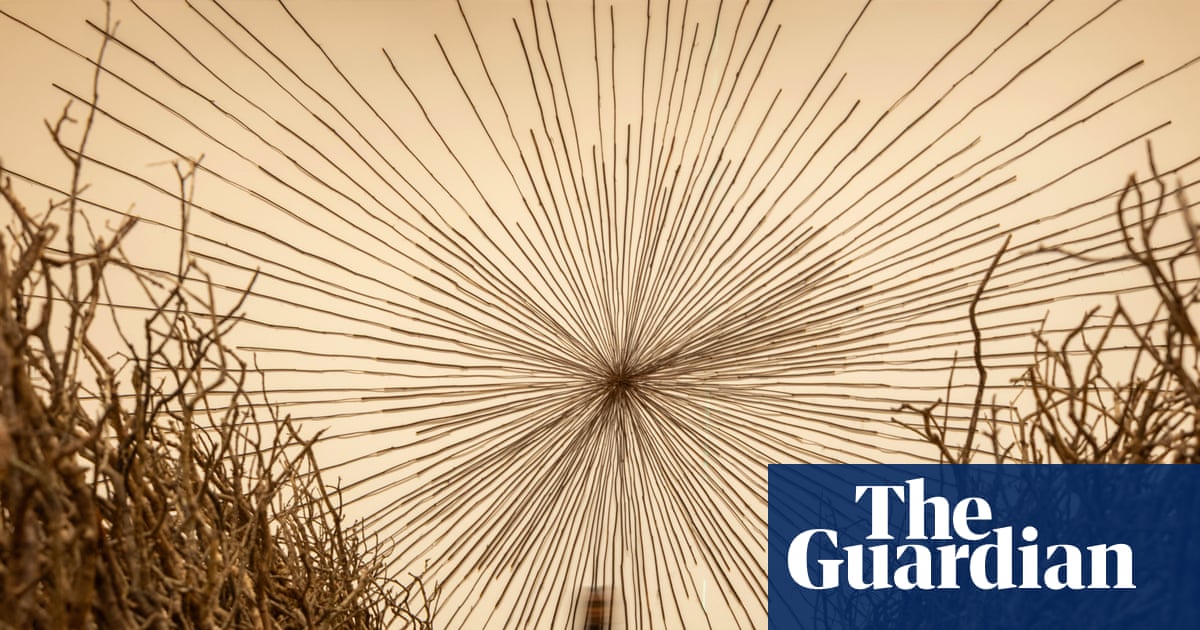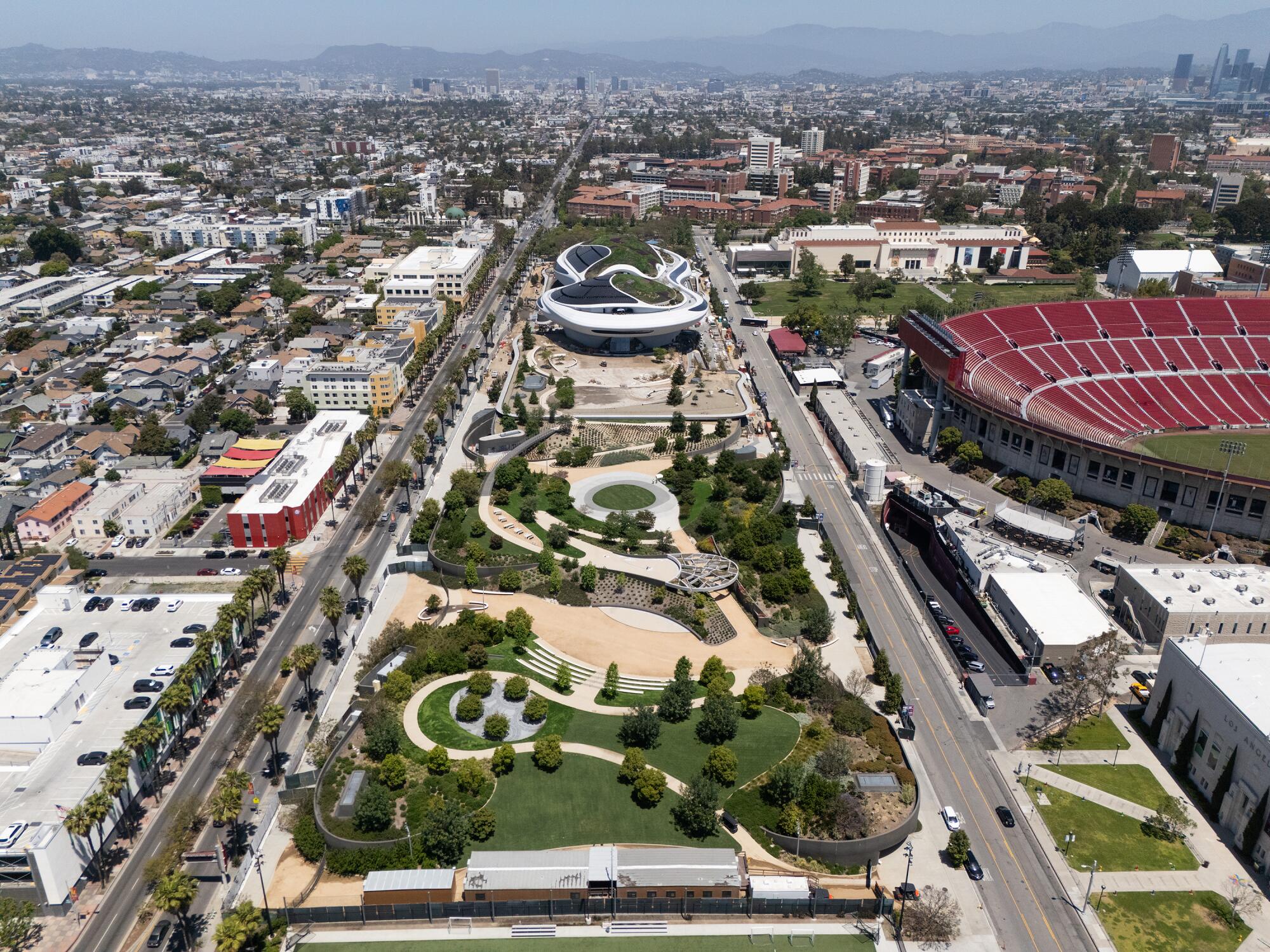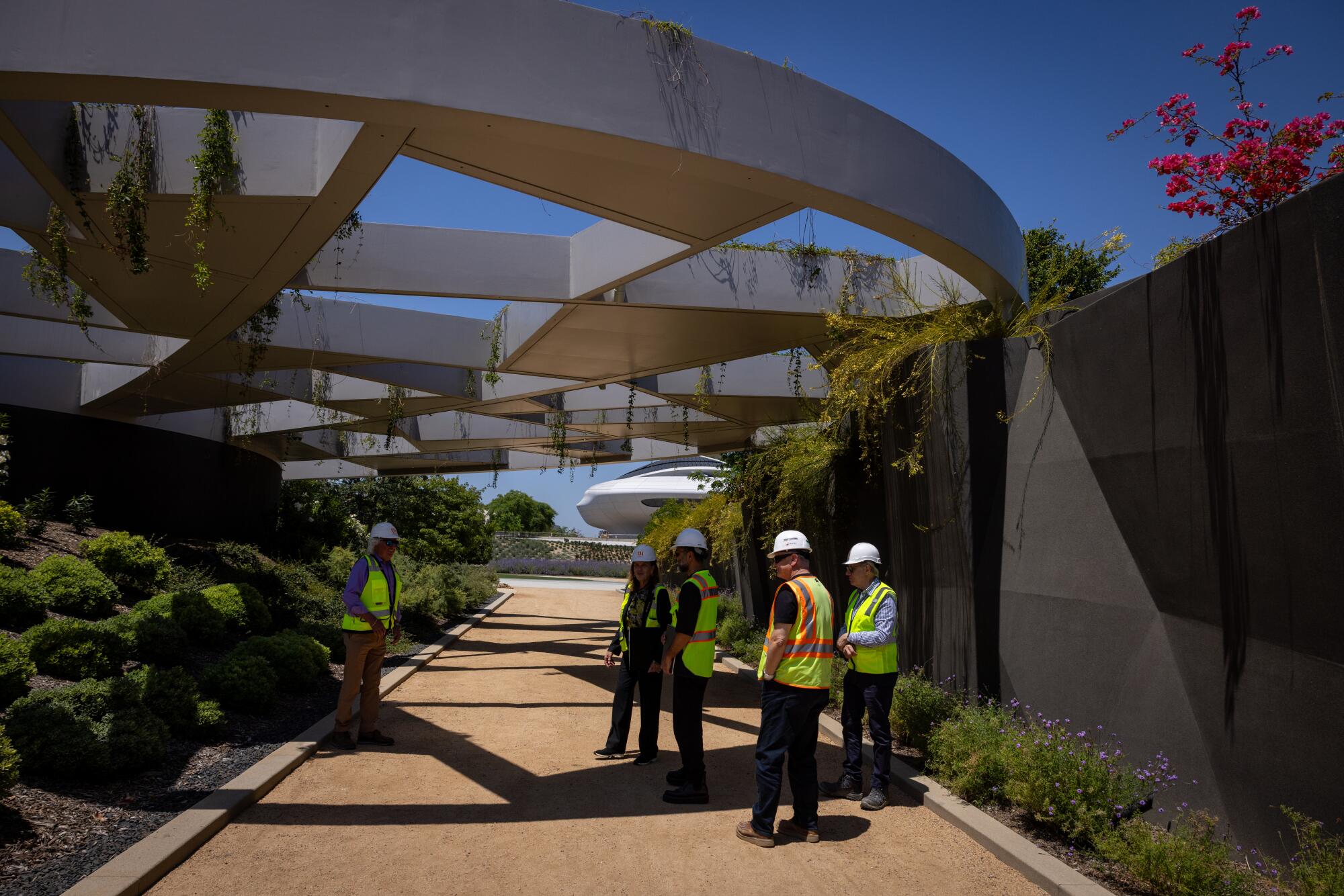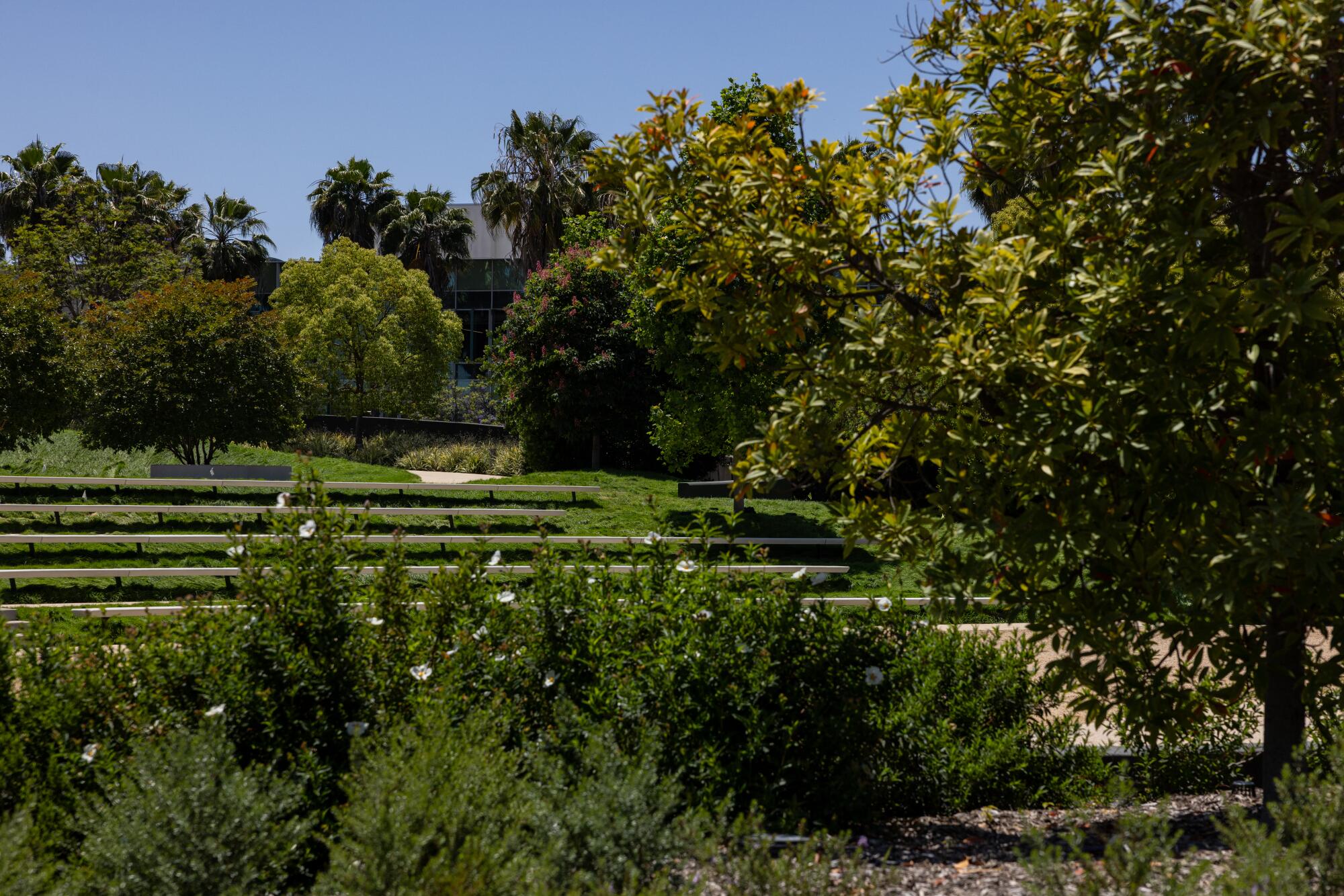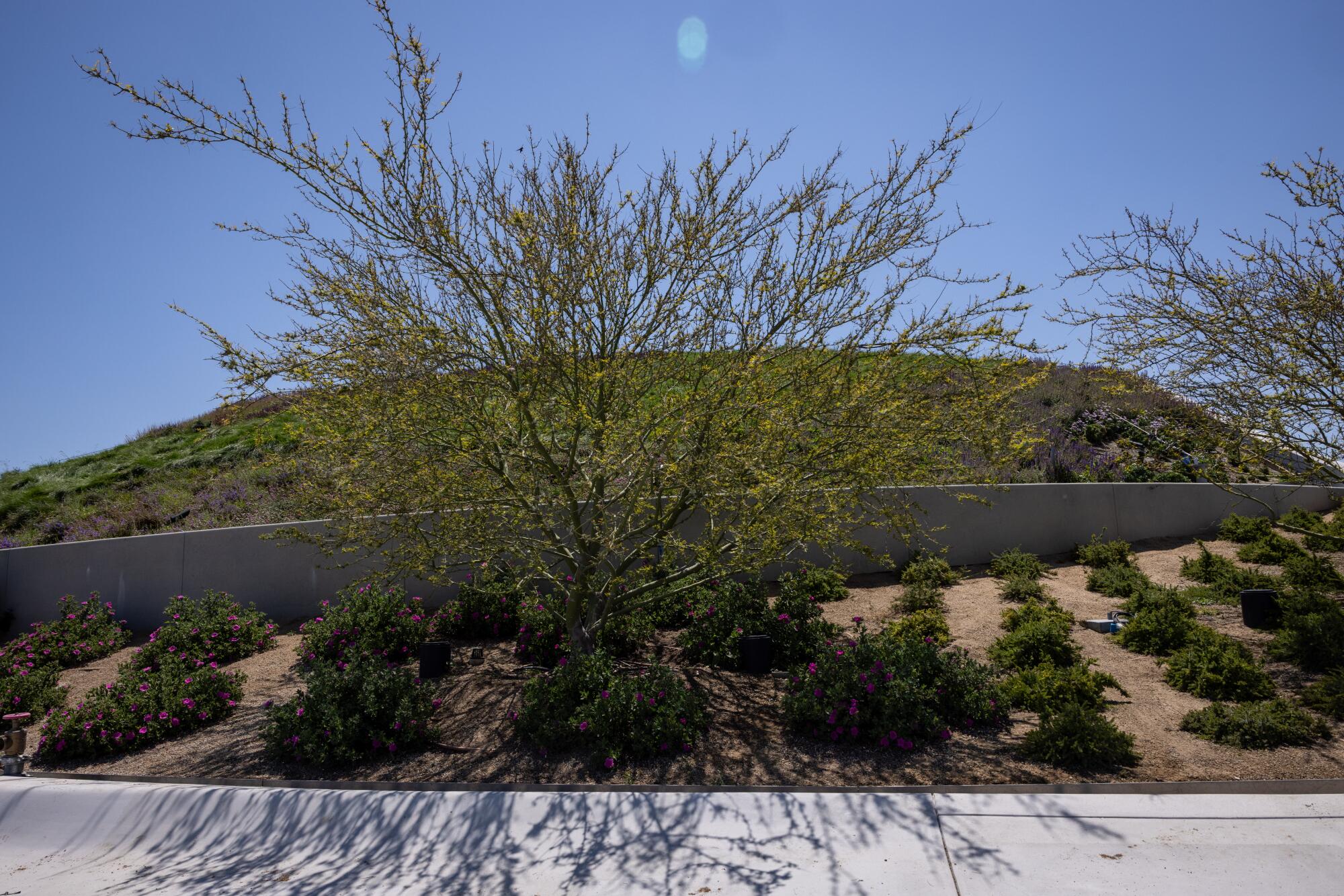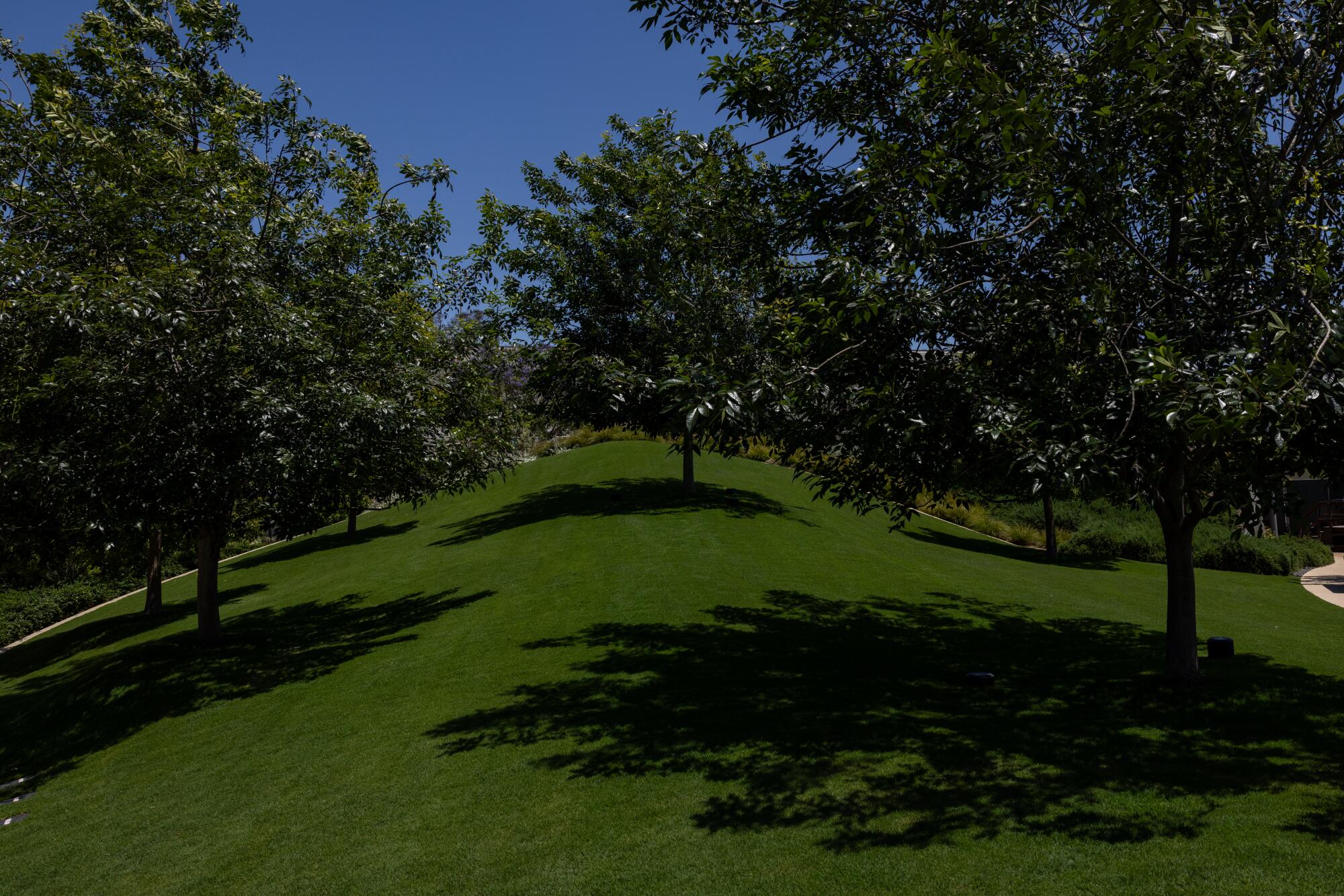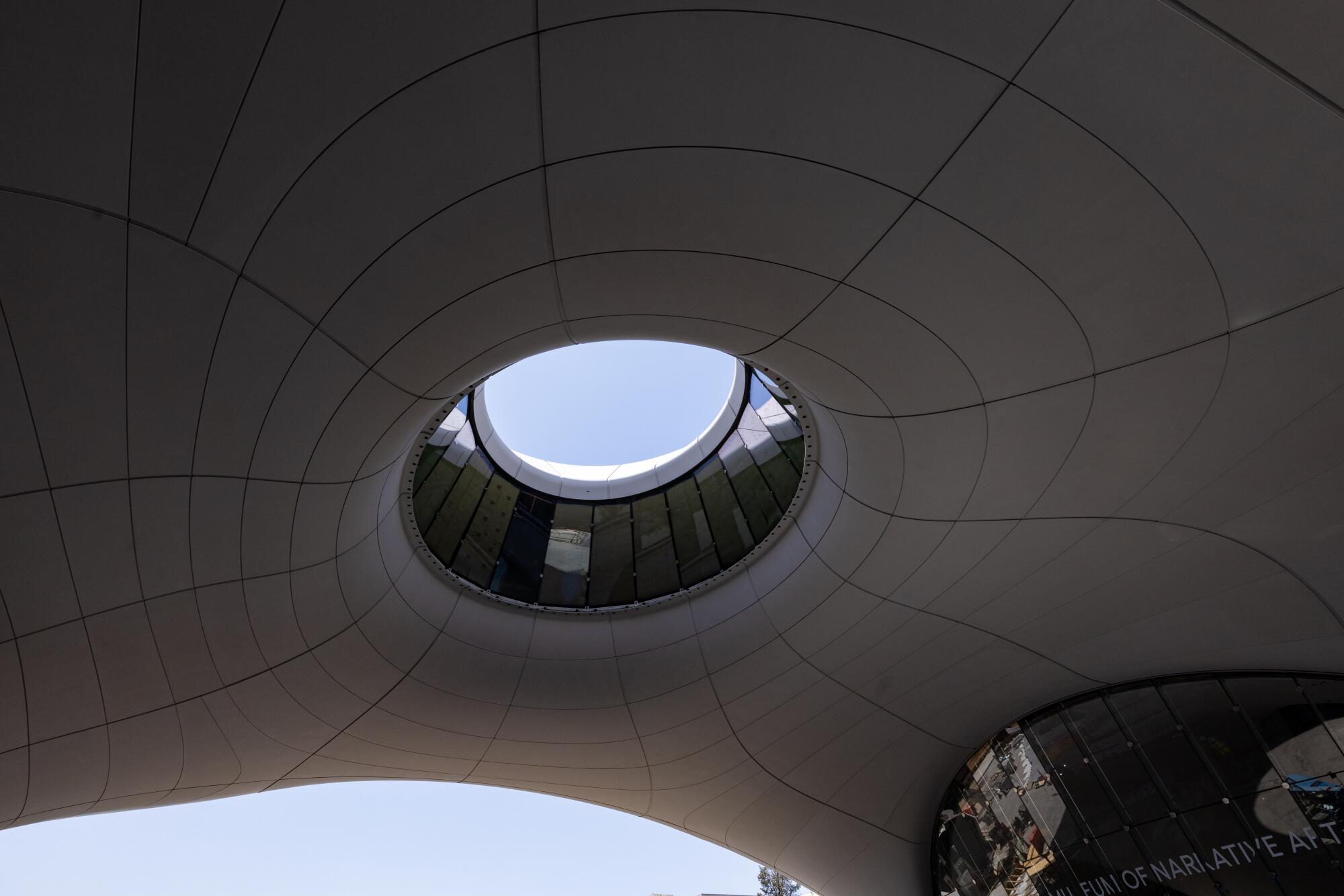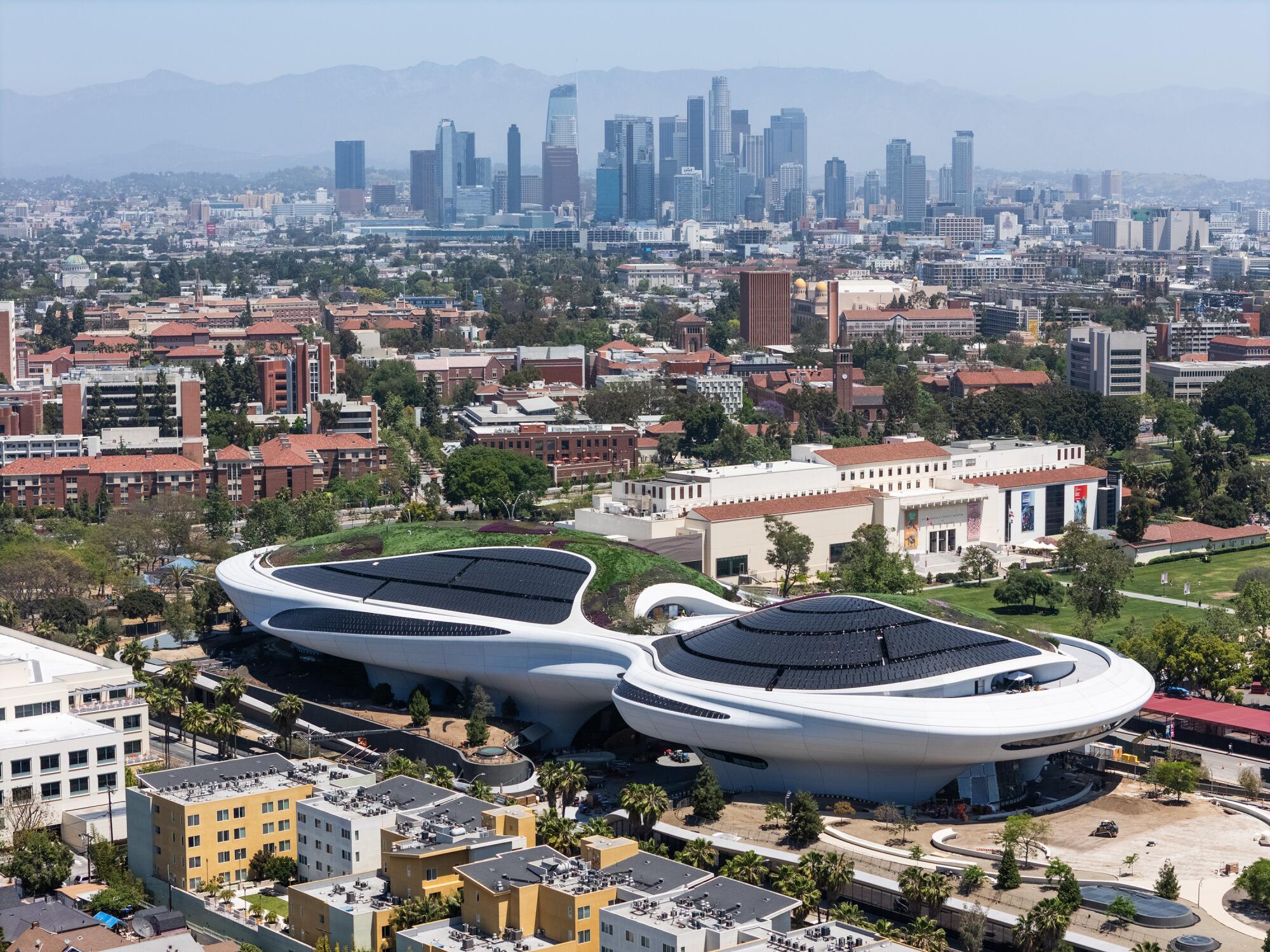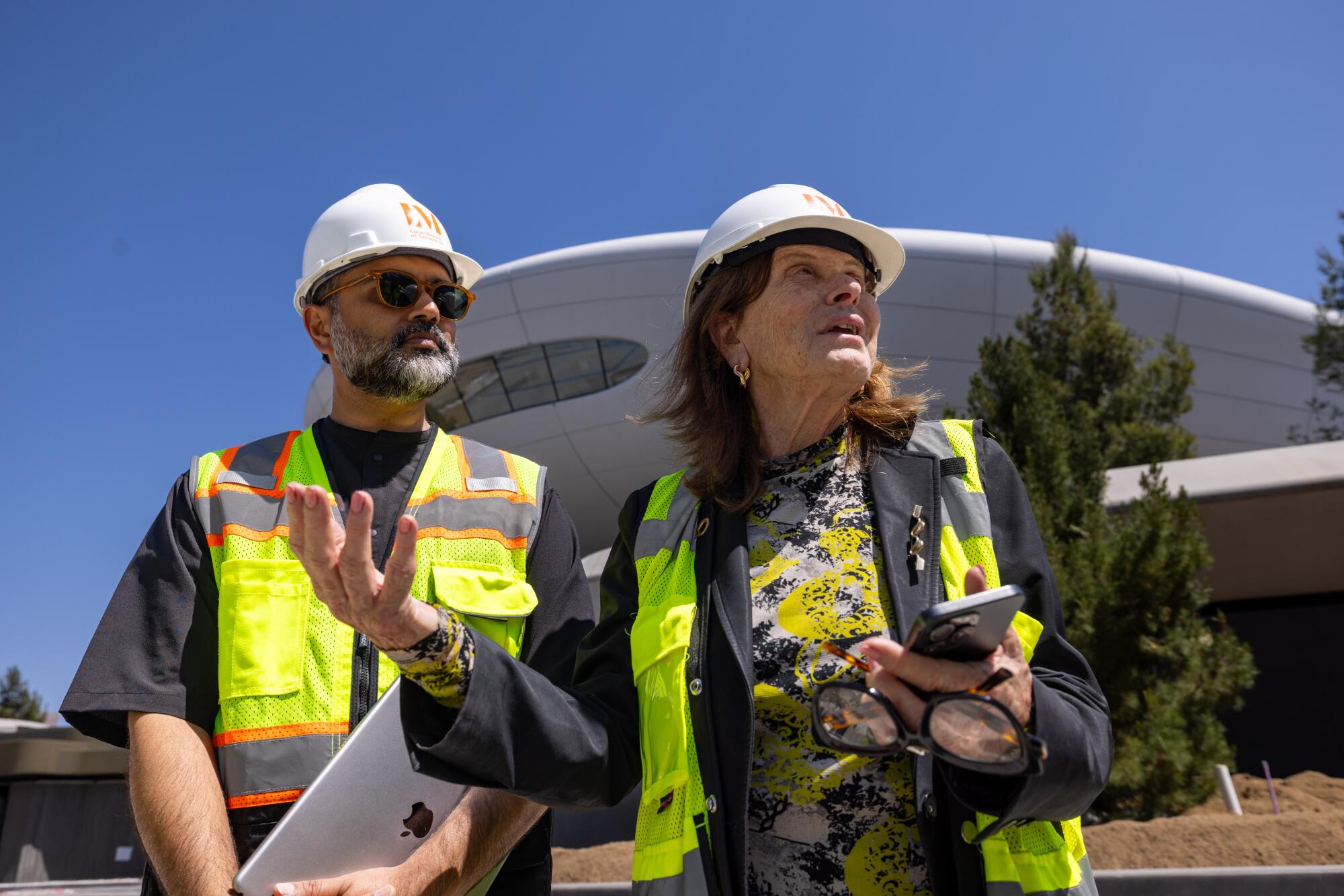The art of the city: a walking tour of Edinburgh’s best landscape sculptures | Cultural trips
A distinct farmyard smell lingers near the muddy Sheep Paintings. People walk slowly between two dense hedges of windfallen oak branches, or stand silently in a fragile cage of bulrush stems with light seeping through the mossy skylight overhead. I’m visiting the largest ever indoor exhibition of work by Andy Goldsworthy, one of Britain’s most influential nature artists. His recent installations have a visceral sense of rural landscape: hare’s blood on paper, sheep shit on canvas, rusty barbed wire, stained wool, cracked clay.
The show is a sensory celebration of earth – its textures and temperatures, colours, character. The seasons cycle through an ongoing multidecade series of photos featuring the same fallen elm. There are leaf patterns and delicate woven branches, crusts of snow, lines of summer foxglove flowers or autumn rosehips. Andy Goldsworthy: Fifty Years is a National Galleries of Scotland (NGS) exhibition in the neoclassical Royal Scottish Academy building.
After the exhibition, as a sort of cultural pilgrimage, I’m walking six miles across Edinburgh in search of works by the Dumfriesshire-based Goldsworthy and other artists who engage with the landscape. I start at the Royal Botanic Garden (free and open daily, rbge.org.uk), a short bus ride north of the National Gallery. Just inside the east gate, there’s a perforated sculpture by Barbara Hepworth with sunlight pouring through it.
“Art has made me look at the world … and engage with what’s around me,” Goldsworthy writes in the notes for Fifty Years. Walking up through shady beeches, blazing wildflowers and scented, bee-buzzing lavender, there’s a bronze girl in a waterlily pond, and a sundial by the Scottish artist and writer Ian Hamilton Finlay near the terrace cafe. Finlay’s best-known artwork is the garden he created with his wife, Sue, in the wild Pentland Hills (£15 over-16s, £10 for 10-15s, under-10s free, open Thursday to Sunday until 28 September, littlesparta.org.uk). He also built a stone temple in the rolling, wooded acres of Jupiter Artland, a few miles from Edinburgh, where Goldsworthy has put rocks in trees and trees in a stone-walled barn (£11.80 adults, £7.50 children). Celebrating both artists, Jupiter’s exhibition Work Begat Work runs until 28 September.
In the Royal Botanic Garden, Goldsworthy’s Slate Cone stands next to Inverleith House, where the gallery is showing feminist photomontages by Linder (free, until 19 October), who opened this year’s Edinburgh art festival (until 24 August). Enlarged images from her work (smiling mouths, bees, lilies) are dotted among ponds and flowerbeds.
Goldsworthy’s Slate, Hole, Wall, a round enclosure of stacked grey stones, stands in the gardens’ south-east corner, under a weeping silver lime tree sweet with honey-fragrant blossom. The Water of Leith Walkway runs close to the John Hope Gateway on Arboretum Place, and I follow it south-westwards. In Stockbridge, the Sunday market, shaded by whitebeam trees, offers loaves of artisanal bread, Perthshire strawberries and cakes made from insects. Almost hidden in branches under a bridge, a lifesize cast-iron figure stands in the river nearby, one of Antony Gormley’s 6 Times statues.
Another of the figures is buried chest-deep by the zebra crossing between National Galleries Scotland: Modern One and Two. Wandering past domed St Bernard’s Well, with its statue of the goddess of health, and picturesque Dean Village, crammed with fellow camera-wielding visitors, I detour to the Modern galleries up the riverside steps. Linking both museums is Charles Jencks’ huge Landform, with its grassy hills and curving pond. There are days’ worth of galleries, artists’ rooms and sculpture gardens to explore here, but the afternoon is passing and I have more miles and museums to cover.
Heading back along the leafy Water of Leith, I climb another steep flight of steps towards Haymarket. On the south lawn of St Mary’s Episcopal Cathedral, a labyrinth winds through aromatic yarrow and knapweed. Around this flowering meadow, as part of an installation called On Sacred Ground, there are rough benches elegiacally listing threatened Scottish species: corncrake, hawfinch, wryneck, ring ouzel, capercaillie. I walk on through Princes Street Gardens, back past the Royal Academy building, and drop into the National Gallery (free) next door to see Van Gogh’s impasto Olive Trees and William McTaggart’s stormy seascapes.
Up more steps, pausing to look back at distant views of the firth, and then down again across photogenic Victoria Street. Finally, I stroll through Greyfriars Kirkyard to reach the National Museum of Scotland (free, nms.ac.uk). In 1998, Goldsworthy installed four sunset-coloured blocks of split sandstone on the museum roof, with its panoramic city views. But the blue skies have turned stormy. “Our roof terrace is closed today – the weather is too dreich!” says a red sign by the lift.
after newsletter promotion
Instead, I head to the basement, where more late-1990s works by Goldsworthy complement a brilliant gallery about Scotland’s early inhabitants. There’s Hearth, a burned circle on a platform of salvaged wood from the museum’s construction site. Stacked Whalebones is a pale ball of interlocking bones, the whole skeleton of a five-metre pilot whale found beached in Northumberland. Around golden bronze age torcs and silver Viking arm-rings, Roman carvings and flint arrowheads, the artist also designed Enclosure, two curving walls of reworked Edinburgh slates. Another backdrop is of stained Dumfriesshire clay like the Red Wall in the Fifty Years exhibition.
Outside, the Edinburgh fringe is in full swing (until 25 August). Among the crowds are buskers, jugglers, unicyclists. With just one night to sample its anarchic offerings, I plunge into dodgy cabarets and sweaty comedies in tiny underventilated venues. At 9pm, I’m back at the National Museum for an accomplished Lloyd-Webber-esque musical about Van Gogh. Towards midnight, I head to Summerhall for a strange, polyphonic prequel to Hamlet by the Polish choral-theatre group Song of the Goat.
The next day, as I walk to Edinburgh’s Waverley station, there’s a prismatic haze caught between the misty drizzle and breezy summer sun. It reminds me of Goldsworthy’s 1980s photo series with titles like Rainbow Splash Hit Water With Heavy Stick Bright, Sunny, Windy. As the train speeds south, through Northumberland and North Yorkshire, I see with new eyes the wave-pounded cliffs and bale-studded headlands, the dry-stone walls and sheep-scattered patchwork dales.
The trip was provided by Visit Scotland, NGS and LNER, York to Edinburgh from £23 each way, London to Edinburgh from £52 Andy Goldsworthy 50 Years runs until 2 November, £19 adults, £5 children, nationalgalleries.org).
